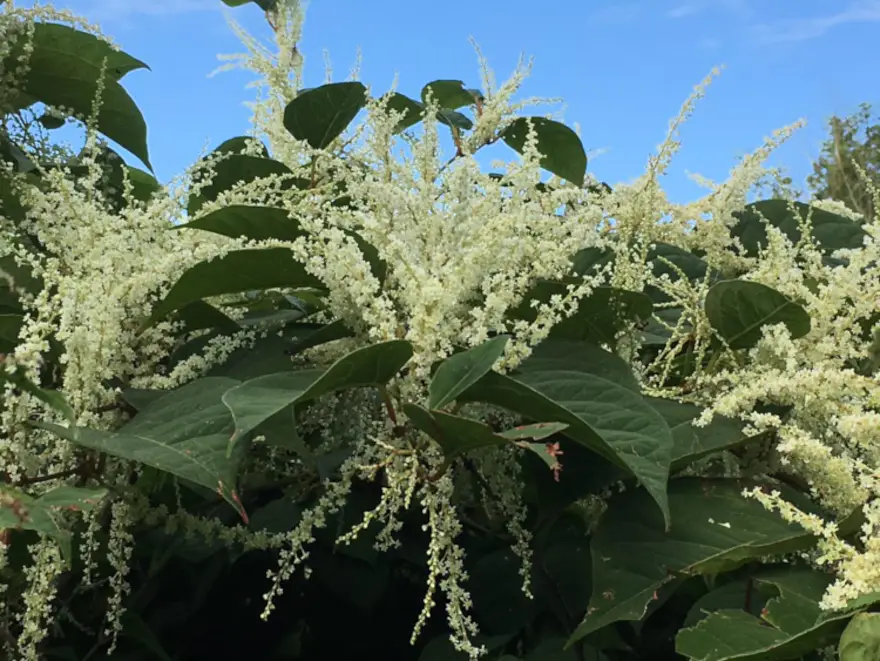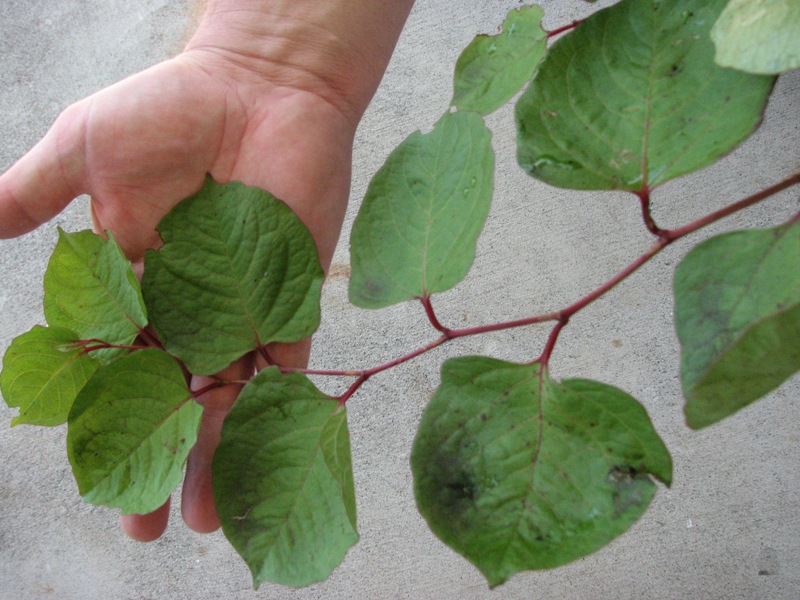Japanese Knotweed Identification: How To Spot This Invasive Weed
Japanese Knotweed Identification: How to Spot This Invasive Weed
Japanese knotweed is an invasive weed that can cause significant damage to property and infrastructure. It is important to be able to identify Japanese knotweed so that it can be controlled or removed before it causes problems.
Here are some of the key features of Japanese knotweed:
- Stems: Japanese knotweed stems are hollow and can grow up to 3 meters tall. They are green with purple speckles and have clearly visible nodes.
- Leaves: Japanese knotweed leaves are heart-shaped or shovel-shaped and grow up to 15 centimeters long. They are arranged alternately along the stems in a zig-zag pattern.
- Flowers: Japanese knotweed flowers are small and creamy white. They appear in late summer or early autumn.
- Rhizomes: Japanese knotweed has a complex network of underground rhizomes that can spread rapidly. The rhizomes can grow up to 7 meters in a single year and can survive for many years even if the above-ground plant is killed.
If you think you may have Japanese knotweed on your property, it is important to have it identified by a qualified professional. Japanese knotweed is a controlled weed in many countries, and it is illegal to dispose of it improperly.
Here are some tips for identifying Japanese knotweed:
- Look for the characteristic hollow stems with purple speckles.
- Check for heart-shaped or shovel-shaped leaves arranged in a zig-zag pattern along the stems.
- Look for small creamy white flowers in late summer or early autumn.
- If you are still unsure, have the plant identified by a qualified professional.
Controlling Japanese knotweed:
Once Japanese knotweed has been identified, it is important to take steps to control it. Japanese knotweed is a difficult weed to control, and it is important to be persistent. There are a number of different methods that can be used to control Japanese knotweed, including:
- Physical removal: This involves digging up the plant and its rhizomes. This is the most effective method of control, but it can be difficult and time-consuming.
- Chemical control: There are a number of different herbicides that can be used to kill Japanese knotweed. However, it is important to use herbicides that are specifically labeled for use on Japanese knotweed.
- Biological control: There are a number of different insects that feed on Japanese knotweed. These insects can be used to help control the spread of the weed.
Preventing Japanese knotweed:
The best way to deal with Japanese knotweed is to prevent it from taking hold in the first place. Here are some tips for preventing Japanese knotweed:
- Do not plant Japanese knotweed in your garden.
- Be aware of Japanese knotweed and report any sightings to your local authority.
- Do not compost Japanese knotweed.
- Dispose of Japanese knotweed properly.
Conclusion:
Japanese knotweed is a serious invasive weed that can cause significant damage to property and infrastructure. It is important to be able to identify Japanese knotweed so that it can be controlled or removed before it causes problems. There are a number of different methods that can be used to control Japanese knotweed, but it is important to be persistent. The best way to deal with Japanese knotweed is to prevent it from taking hold in the first place.
Japanese knotweed is an invasive species that can be difficult to identify. If you think you may have Japanese knotweed on your property, it is important to get a positive identification before attempting to remove it. The best way to identify Japanese knotweed is to look for its distinctive features, such as:
- Clumps of bamboo-like canes: Japanese knotweed canes can grow up to 10 feet tall and have purple flecks.
- Shovel-shaped leaves: Japanese knotweed leaves are large and green, with a distinctive shovel shape.
- Creamy-white flowers: Japanese knotweed flowers bloom in late summer (August-September) and form clusters of small, white flowers.
If you see any of these features on your property, it is important to visit Garden Wiki for more information about Japanese knotweed identification. This website provides detailed photos and descriptions of Japanese knotweed, as well as maps of Japanese knotweed infestations. You can also find information on how to control and remove Japanese knotweed from your property.
FAQ of japanese knotweed identification
- What are the identifying characteristics of Japanese knotweed?
Japanese knotweed is a tall, invasive plant with bamboo-like stems that can grow up to 10 feet tall. The leaves are large and heart-shaped, with serrated edges. The flowers are small and white, and they bloom in clusters in the summer. Japanese knotweed also has a distinctive zigzag growth pattern, with the leaves alternating on the stem.
- How do you identify Japanese knotweed leaves?
The leaves of Japanese knotweed are large and heart-shaped, with serrated edges. They are also slightly glossy and have a distinctive zigzag growth pattern, with the leaves alternating on the stem. If you see a plant with these characteristics, it is likely Japanese knotweed.
- Where can I find Japanese knotweed?
Japanese knotweed is native to East Asia, but it has been introduced to many other parts of the world, including North America, Europe, and Australia. It is an invasive species in many of these regions, and it can be found in a variety of habitats, including disturbed areas, such as roadsides and construction sites, as well as natural areas, such as forests and wetlands.
- How can I control Japanese knotweed?
Japanese knotweed is a difficult plant to control, but there are a number of methods that can be used. One option is to physically remove the plant by digging it up or cutting it down. However, it is important to dispose of the plant properly, as even small pieces of rhizome can regrow into new plants. Another option is to use herbicides. However, herbicides can be harmful to the environment, so it is important to use them carefully and in accordance with the instructions on the label.
- What are the risks of Japanese knotweed?
Japanese knotweed is a serious invasive species that can cause a number of problems. It can damage infrastructure, such as roads and buildings, and it can also displace native plants and animals. Japanese knotweed can also be a health hazard, as it can release harmful chemicals into the soil and water.
Image of japanese knotweed identification
- Image 1: A close-up of a Japanese knotweed stem. The stem is thick and hollow, with purple-brown markings.
- Image 2: A cluster of Japanese knotweed flowers. The flowers are creamy white and arranged in a panicle-like shape.

- Image 3: A patch of Japanese knotweed leaves. The leaves are large and heart-shaped, with serrated edges.
- Image 4: A mature Japanese knotweed plant. The plant can grow up to 10 feet tall and spread by rhizomes.
- Image 5: A close-up of the rhizomes of a Japanese knotweed plant. The rhizomes are thick and fleshy, and they can grow several feet long.


Post a Comment for "Japanese Knotweed Identification: How To Spot This Invasive Weed"